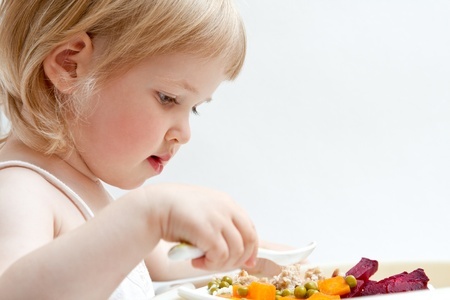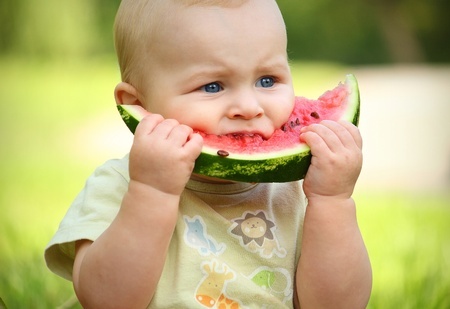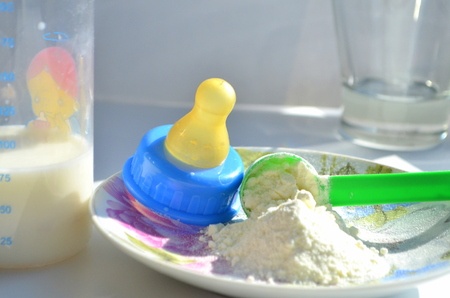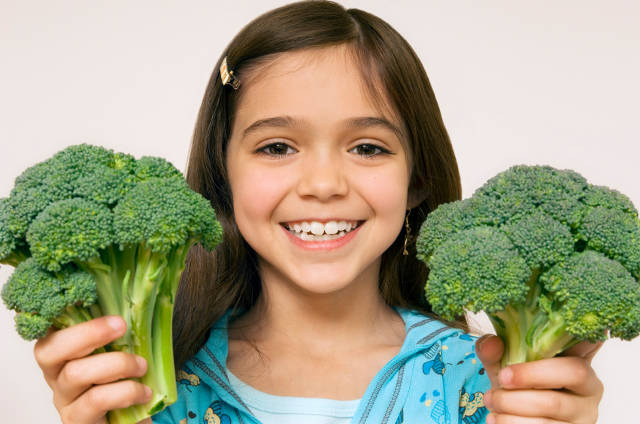Nutrition in the early years plays an important role in growth and development. This includes the time from the point of conception, to birth, infancy and childhood. This period is known as the “first 1000 days” of life. Current evidence reveals that nutrition in this first 1000 days does have a lasting emotional, cognitive and psychological impact in later life.
Corbett and Drew (2004) demonstrated that children who had faltering growth in the first few years of life were more likely to have lower intelligent quotient points than children who did not experience faltering growth in the first few years of life.

Eating habits start from young
What children eat in their infancy and early toddler years not only determines what their physical growth may be like, it also determines what they are likely to eat later on in life. Grimm et al. (2014) reported that children who consumed fruits and vegetables less than once a day in late infancy are almost 2.5 times more likely to continue doing so at age 6 years. This is of concern as fruits and vegetables are good sources of nutrients such as fibre, folate, vitamin A and C. A diet high in fruits and vegetables has been shown to be associated with a decreased risk of developing chronic diseases later on in life.
Another study, by Van der Hooven et al. (2015), has shown a positive association between good bone development in childhood and an infant dietary pattern high in the intake of dairy and cheese, whole grains and eggs. Good bone development is important both for growth, as well as the prevention of fractures later in life.
It is important to ensure that our children eat well in early infancy, choosing foods from a variety of food groups as recommended by the Health Promotion Board (HPB). These four food groups are ‘Brown rice and Wholemeal bread’, ‘Fruit’, ‘Vegetables’, Meat and Others’.
A recent study by Abbott Nutrition, together with students from the National University of Singapore, revealed that in a cohort of seventy children aged three, two in five were not drinking the recommended amount of milk; four out of five were eating less than one serving of vegetables per day and just over one in two were eating less than one portion of fruit per day.
These figures are similar to that reported in a cohort of 1078 American children aged six, in that one in three children were consuming less than one fruit portion a day and one in five children were consuming less than one vegetable portion per day. As the survey studied only a small number of children, we cannot be certain that this is truly reflective of all young children in Singapore. However, it does give us some insight regarding what young children in Singapore are eating, and that they may be at similar nutritional risks.
Macronutrients and Micronutrients

Key nutrients needed for a growing child can be subdivided into macronutrients and micronutrients. Macronutrients such as carbohydrates, protein and essential fats provide the fuel and building blocks respectively for various body parts to grow well. Micronutrients such as calcium, iron, zinc, vitamin D, vitamin C help in various body functions as well as aid in the utilization of macronutrients for the body.
*******************************
Here are top 5 foods and drinks for kids that provide these key nutrients:
1. Dairy foods such as cheese, milk, yoghurt – good sources of calcium and vitamin D
2. Complex carbohydrates such as rice, noodles or bread, with a proportion of them containing wholegrains such as brown rice or wholemeal bread – good sources of B vitamins, carbohydrates for energy
3. Oily fish such as salmon, Spanish mackeral, sardines – good sources of protein and omega 3
4. Brightly coloured vegetables such as capsicums, green leafy vegetables, carrots and eggplant – good sources of phytochemicals, fibre, vitamin E, folate
5. Coloured fruits such as papayas, grapes, blueberries and kiwis – good sources of fibre, vitamin C, phytochemicals, potassium
➡️ Related Read: Power Up! Top 10 Immunity Foods For Children
The aim is to encourage children to eat a variety of foods from each of the food groups listed above. If a child does not eat a variety of foods from the food groups, his or her diet may be lacking in specific nutrients as a result of their limited food choices. It may then be appropriate to supplement his or her diet for a period of time with multivitamins and/or milk that has been fortified with these micronutrients.

Formula (powdered) milk differs from fresh cow’s milk in that vitamins and minerals such as zinc, iron, B vitamins, vitamin C (that are not normally found in fresh cow’s milk) have been added, and each serving (for children aged more than 1 year) also contains more calories and carbohydrates than fresh cow’s milk. In addition, toddler formula (for children aged more than 1 year) is available for different age groups: usually 1-3 years, 3-6 years and more than 6 years.
It has been shown that a child’s diet early on in life has significant effects on their eating habits, physical growth as well the risk of developing chronic diseases later on in life. Start cultivating healthy eating habits in your kids now!
To ensure that they receive adequate nutrition, you can refer to Health Promotion Board’s ‘My Healthy Plate’.
This article was contributed by Ms. Charlotte Lin, Senior Dietitian, Paediatric Feeding and Nutrition Clinic, National University Hospital.
References:
- Bier, D. M. 2008. Growth In The First Two Years Of Life. Nestle Nutrition Workshop Series. Paediatric Programme, 61, 135-44.
- Corbett, S. S. & Drewett, R. F. 2004. To What Extent Is Failure To Thrive In Infancy Associated With Poorer Cognitive Development? A Review And Meta-Analysis. J Child Psychol Psychiatry, 45, 641-54.
- Grimm, K.A., Kim, S.A., Yaroch, A.L., Scanlon, K.S. 2014. Fruit and Vegetable intake during infancy and early childhood. Pediatrics, 134, S63-69.
- Huang, C., Martorell, R., Ren, A. & Li, Z. 2013. Cognition And Behavioural Development In Early Childhood: The Role Of Birth Weight And Postnatal Growth. Int J Epidemiol, 42, 160-71.
- Joosten, K. F. & Hulst, J. M. 2011. Malnutrition In Pediatric Hospital Patients: Current Issues. Nutrition, 27, 133-7.
- Koletzko, B., Beyer, J., Brands, B., Demmelmair, H., Grote, V., Haile, G., Gruszfeld, D., Rzehak, P., Socha, P., Weber, M. & European Childhood Obesity Trial Study, G. 2013. Early Influences Of Nutrition On Postnatal Growth. Nestle Nutr Inst Workshop Ser, 71, 11-27.
- Makrides, M., Anderson, A. & Gibson, R. A. 2013. Early Influences Of Nutrition On Fetal Growth. Nestle Nutr Inst Workshop Ser, 71, 1-9.
- Van der Hooven, E.H., Heppe D.H.M, Kiefte-de Jong J.C., Medina-Gomez, C., Moll, H.A., Hofman, A., Jaddoe, V.W.V., Rivadeneira, F., Franco, O.H. 2015. Infant Dietary patterns and bone mass in childhood: the Generation R Study. Osteoporos Int, 26, 1595-1604.
* * * * *
Like what you see here? Get parenting tips and stories straight to your inbox! Join our mailing list here.
Want to be heard 👂 and seen 👀 by over 100,000 parents in Singapore? We can help! Leave your contact here and we’ll be in touch.

























































Leave a Comment: